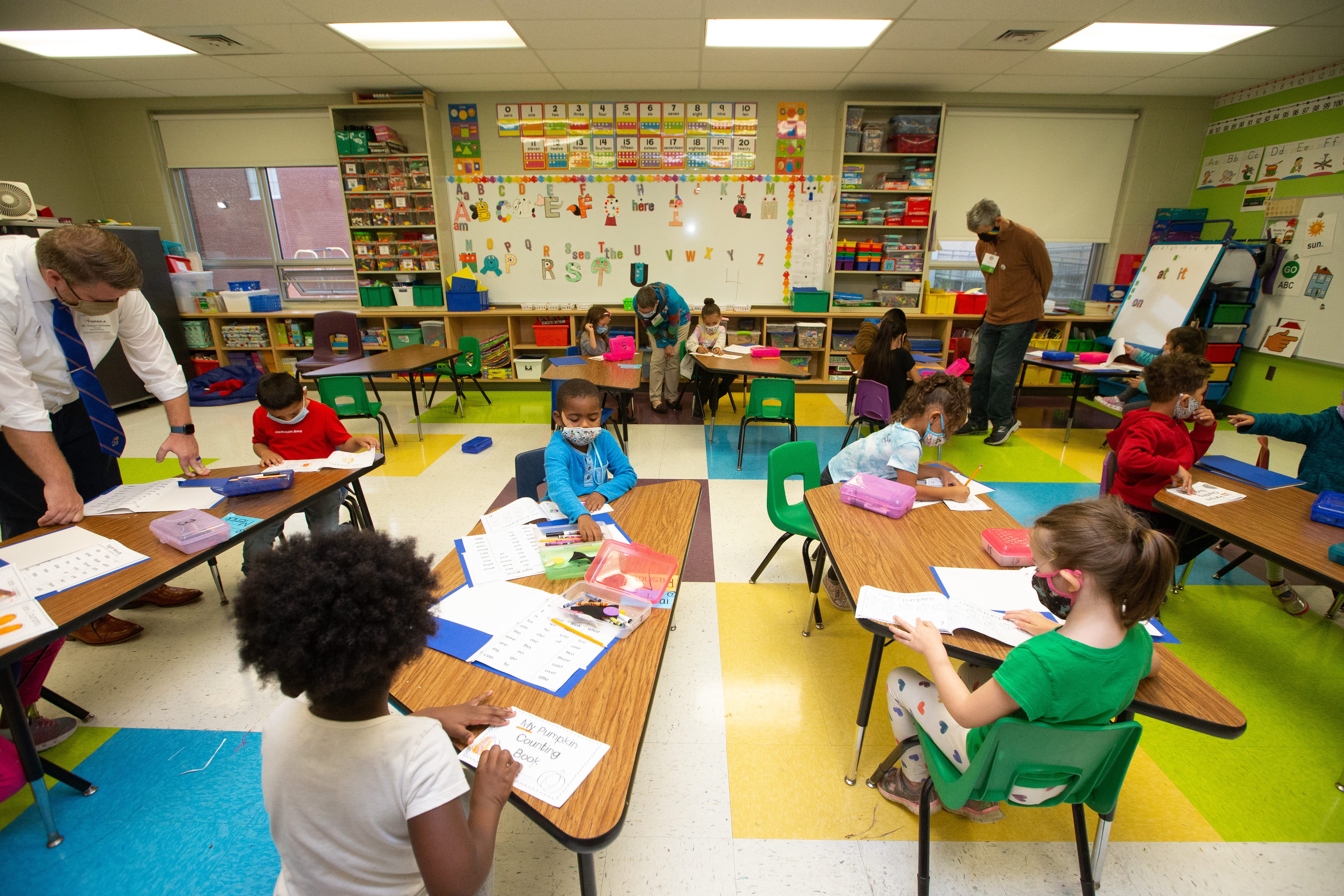The Best Primary Science Tuition Singapore for Effective Learning Methods
The Best Primary Science Tuition Singapore for Effective Learning Methods
Blog Article
Discovering the Different Training Methods in Key Scientific Research Education Today
The landscape of key scientific research education and learning is advancing, with various training methods obtaining importance in modern class. Inquiry-based knowing, hands-on experiments, and the assimilation of innovation are redefining exactly how instructors involve young minds. Furthermore, joint methods and differentiated direction are being used to provide to the varied needs of students, improving both interaction and understanding. As we take a look at these techniques, inquiries occur regarding their efficiency and the ramifications for future academic techniques. What might these shifts in method mean for the following generation of learners?
Inquiry-Based Discovering
Inquiry-Based Knowing (IBL) is a pedagogical technique that encourages pupils to explore clinical principles through questioning, examination, and hands-on trial and error. This approach emphasizes the function of students as energetic individuals in their knowing, promoting crucial thinking and analytical abilities. By involving with real-world inquiries, pupils come to be determined and interested, which improves their understanding of clinical concepts.
In IBL, instructors work as facilitators, assisting students as they navigate their questions as opposed to supplying info straight. This student-centered method allows for distinction, accommodating various discovering paces and styles. Trainees create abilities in creating theories, designing experiments, and analyzing information, which are vital for clinical literacy.
In addition, IBL fosters partnership among pupils, encouraging them to share concepts and findings. This collective query advertises social abilities and a sense of neighborhood within the classroom. The process of query encourages resilience, as pupils learn to welcome failing as a stepping rock toward understanding.
Hands-On Experiments
Hands-on experiments are a crucial component of reliable scientific research education, matching the principles of inquiry-based learning. These experiments permit trainees to engage directly with clinical concepts, cultivating a deeper understanding with experiential learning. By adjusting materials and observing end results, young learners can realize abstract theories in substantial ways.
Such activities advertise vital reasoning and analytic skills, as students hypothesize end results, conduct experiments, and analyze results. This process motivates them to ask questions, improve their understanding, and develop a scientific mindset. Hands-on experiments can be tailored to varied discovering designs, making certain that all pupils have the opportunity to engage meaningfully with the content.
Additionally, hands-on experiments frequently urge cooperation amongst peers, advertising teamwork and interaction skills. Working in groups enables trainees to share concepts, review findings, and pick up from one another, which enhances their overall instructional experience.
Incorporating hands-on experiments into the main science educational program not only enhances the learning environment but likewise cultivates a long-lasting passion in scientific research. By proactively taking part in their education and learning, students are more probable to develop a passion for scientific questions that prolongs past the class.

Innovation Assimilation
Integrating modern technology into main science education and learning has become significantly crucial in cultivating pupil involvement and enhancing learning results. Using digital tools, such as interactive simulations, digital labs, and instructional software program, gives pupils with chances to check out clinical principles in innovative means. These resources promote a deeper understanding of complicated topics by allowing learners to picture and adjust variables that would be impractical in a typical classroom setup.
In addition, innovation assimilation motivates customized learning experiences. Trainees can advance at their very own speed, reviewing difficult principles via multimedia resources, which satisfy different knowing styles. This adaptability not only sustains private development yet likewise cultivates a sense of autonomy in students.
In addition, innovation offers as a bridge to real-world scientific research, linking trainees with present study and expert contributions. Accessibility to scientific journals and on the internet data sources expands trainees' point of views on clinical query and fosters vital assuming skills.
Collaborative Knowing
Joint understanding plays an essential duty in key science education and learning by promoting synergy and interaction skills amongst trainees. This technique urges learners to collaborate, share knowledge, and participate in problem-solving, which boosts their understanding of scientific concepts. By joining group activities, trainees learn to articulate their concepts, pay attention to diverse point of views, and discuss services, all of which are crucial abilities in both academic and real-world contexts.

Research shows that collective understanding can result in raised motivation and engagement in scientific research subjects, as pupils discover pleasure in common experiences (primary science tuition Singapore). Additionally, this technique prepares students for future collective ventures, equipping them with the skills required for efficient teamwork in greater education and expert settings. like this Ultimately, embracing collective knowing in primary science education can significantly enhance the understanding experience and promote a deeper understanding of scientific inquiry
Separated Guideline

Set apart instruction can materialize in numerous methods, such as varying the content, procedures, or items of discovering. Instructors might use tiered assignments that offer differing degrees of complexity, allowing pupils to function at their particular preparedness levels. In addition, flexible organizing techniques basics can help with collaboration amongst trainees with different capacities, fostering peer discovering.
Assessment plays an important role in this technique, as it informs direction and aids instructors recognize each pupil's unique needs. Formative assessments, such as observations and tests, can assist instructors in changing their approaches to improve discovering outcomes. primary science tuition Singapore. Inevitably, by implementing separated instruction in key science education, educators can cultivate an extra efficient and fair discovering setting, empowering all trainees to reach their full capacity in comprehending clinical sensations
Verdict
In recap, the varied teaching strategies in key scientific research education and learning, including inquiry-based understanding, hands-on experiments, innovation combination, joint discovering, and separated guideline, jointly contribute to an extra effective understanding environment. These approaches advertise crucial reasoning, analytic abilities, and a much deeper understanding of clinical concepts. By implementing these strategies, teachers can produce encouraging and appealing class that resolve the different needs of pupils, inevitably promoting a long-lasting interest in scientific research and enhancing scholastic achievement.
Inquiry-Based Learning (IBL) is an instructional approach that motivates pupils to discover clinical concepts via wondering about, investigation, and hands-on trial and error.Collaborative knowing plays a crucial role in key science education by cultivating team effort and interaction abilities among students.Research study indicates that collaborative look at this website learning can lead to boosted motivation and involvement in scientific research subjects, as students locate enjoyment in common experiences.In cultivating a comprehensive learning setting, separated direction emerges as a crucial approach to fit the diverse requirements and abilities of trainees in primary scientific research education and learning. Inevitably, by carrying out separated direction in main science education and learning, educators can grow an extra reliable and fair discovering atmosphere, encouraging all trainees to reach their full possibility in recognizing scientific sensations.
Report this page